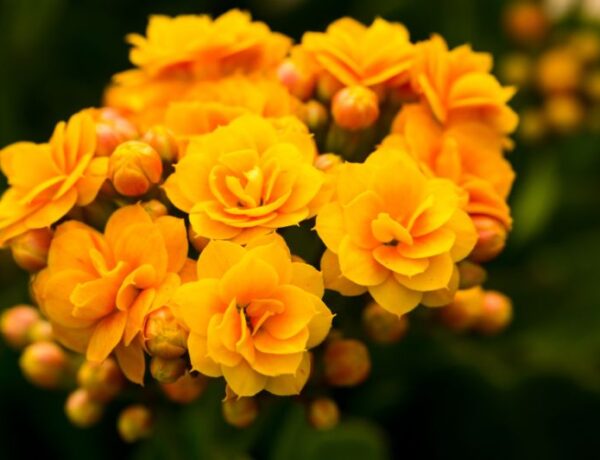Ever heard of a Philodendron hederaceum var. oxycardium? No worries if you haven’t—that’s just the science-y name for the lovely Heartleaf Philodendron.
With its loveable, heart-shaped leaves and forgiving nature, this plant is a hit with both newbie gardeners and those of you who basically live in a jungle already. Knowing its scientific name isn’t just about impressing your friends, it also helps when you’re looking for care guides or planning to diversify your Philodendron family.
But no matter what you call it, one thing is for sure: caring for this beauty is as straightforward as it gets! Ready to dive into the nitty-gritty? Let’s go!
Table of Contents
1. General Information & Taxonomy
| Scientific name: | Philodendron hederaceum var. oxycardium |
| Common names: | Heartleaf Philodendron, Sweetheart Plant, Heartleaf Ivy, Vilevine, Parlor Ivy |
| Native to: | Central America and the Caribbean |
| Toxicity: | Toxic to dogs, cats, and horses (According to ASPCA) |
| Mature size: | 4-10 feet indoors |
| Category: | Climbing & vining houseplant |
| Growth rate: | Moderate to Fast |
| Hardiness: | Hardy in USDA zones 10+ |

2. Heartleaf Philodendron Care & Growing Requirements
» Watering
Keep the vibes of its native rainforest alive by watering your Heartleaf Philodendron once the top half of the soil dries out. Your watering schedule might be once a week or a few times a month—just tune into your plant’s needs.
Cold water? Skip it. Aim for room temperature to avoid shocking those roots!
» Light
Bright, indirect light makes this sweetheart happiest. If you notice it getting leggy or its leaves shrinking, it’s probably yearning for more light. But remember, no direct sun rays; we don’t want those leaves to crisp up.
» Soil
A well-draining mix with good aeration is the way to go. You can opt for commercial Aroid mixes or DIY with some regular soil, perlite, orchid bark, and worm castings for that extra nutrient boost.
» Temperature
Heartleaf Philodendron likes it warm, with temps ranging from 68-94°F. It’ll forgive you if it gets a bit cooler, but don’t make it a habit.
» Humidity
Higher humidity from 60-80% will make those leaves grow lush and lovely. If your home’s on the drier side, consider a humidifier or placing it in a bathroom. (That’s where I actually kept mine for more than two years).
» Fertilizer
Not a must, but a balanced 10-10-10 fertilizer can give your Heartleaf Philodendron a nice growth spurt. Apply it monthly in growing seasons and bi-monthly in winter. But remember, overdoing it might cause root burn. Less is more!
3. Heartleaf Philodendron Maintenance
» Repotting
Every 2-3 years, give your Heartleaf Philodendron a new home that’s 1-2 inches bigger than its current pot. You’ll know it’s time when you see roots peeking out from the drainage holes or rising above the soil. The ideal time to make the move is late spring or early summer.
» Pruning
Not mandatory but oh-so-rewarding, pruning gives your Philodendron room to thrive. Aim to give it a little trim in the spring or fall. You’ll be encouraging new growth, and your plant will look bushier and super vibrant. Just snip away any dead or yellow leaves and maybe even shorten long stems if you prefer a more compact plant.
» Propagation
One plant can turn into two, then three, then… well, you get the idea! Propagation is super easy with Heartleaf Philodendrons. Simply cut 3-6-inch stems just below the leaf node, place them in water until they grow roots, and then pot ’em up! Before you know it, you’ll have baby Philodendrons to share with friends—or expand your own indoor jungle.
Check out our article on different ways to propagate a philodendron for more info!
4. Common issues
You’ve showered your Heartleaf Philodendron with love, but sometimes things don’t go as planned. Here are some common issues you might encounter and how to nip them in the bud, literally and figuratively. Keep an eye out for these signs to make sure your leafy companion stays happy and healthy:
- Yellow Leaves: Usually a sign of overwatering. If you notice yellow leaves, check the soil. If it’s wet, allow it to dry out a bit before watering again.
- Brown Tips: It could be due to low humidity or too much fertilizer. A quick misting session or cutting back on the fertilizer can solve the problem.
- Drooping Stems: Drooping can happen when your plant is too thirsty or too wet. Feel the soil; adjust watering accordingly.
- Small Leaves: If the new leaves are smaller than the older ones, it might indicate inadequate light. Consider moving your plant closer to a window or providing supplemental light.
- Slow Growth: Can be a result of low light or insufficient nutrients. Review your care regimen and consider adding a balanced, liquid fertilizer to the mix.
- Leggy Appearance: Heartleaf Philodendron gets “leggy” when it’s stretching for the light. Move it to a brighter area so it gets more even light exposure.
- Leaves Falling Off: If your Philodendron’s leaves are dropping at an alarming rate, don’t fret! This is usually a response to significant changes in light, temperature, or watering schedule. Evaluate your care routine and adjust as needed to give your plant the stability it craves.
5. Dealing with Diseases & Pests
Yes, they’re resilient, but sometimes even strong gals face challenges. Keep an eye out for root rot, fungus gnats, spider mites, aphids, and scale bugs. Each has its own treatment but catching them early is key. Make sure to also check out our article on identifying and dealing with common houseplant pests.
Conclusion
With just a bit of TLC, your Heartleaf Philodendron can flourish beautifully in your home. This plant truly offers the best of both worlds: it’s as easy-going as they come, but still has enough character to stand out among your leafy friends.
If the shape of this darling’s leaves has you swooning, you might also be interested in our article on houseplants with heart-shaped leaves. For those who are curious about diving deeper into the Philodendron family, don’t forget to check out our guide on different Philodendron varieties. And if you’re on the hunt for more low-maintenance beauties to add to your home, our list of easy-to-care-for houseplants should be your next stop.
So go ahead and give the Heartleaf Philodendron the love it deserves, and it will surely return the favor with its lush, green foliage.






No Comments